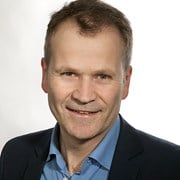They are responsible for interrupting short-circuit currents when faults occur, isolating parts of the grid during maintenance or faults, and for redirecting power and changing the grid infrastructure when needed.
The most common gas used as an insulation medium in GIS today is sulfur hexafluoride, SF6. However, SF6 is the most potent greenhouse gas in existence with a global-warming potential 23 000 times higher than CO2. Replacing this gas would reduce the national and global use of SF6, making GIS-technology more sustainable.
New gases for GIS will investigate the long-term insulation properties of the most promising SF6 alternatives for medium- and high-voltage GIS. The project will obtain fundamental knowledge on discharge behaviour of the alternative gases and gas mixtures through experimental and computational research, and contribute to:
- The future's sustainable and resilient energy grid.
- Reduce national and global use of SF6 (GWP > 23 000).
- Increase reliability of energy supply, by developing tools for condition assessment for new gases.
- Strengthening the national research and education institutes on topics highly relevant to Norwegian industry and society at large.
- Increase collaboration of the whole value chain of medium and high voltage GIS by bringing together research institutes, industry partners and grid operators.
New gases for GIS will contribute to a safe, considered introduction of new GIS technology, where maintaining security-of-supply in a long-term perspective is of the utmost importance.

